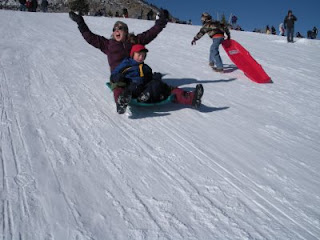
Life. This is a huge word, for being only four letters. The primary definition in my Webster's is a noun, meaning "the quality, principle or force that distinguishes a vital and functional being from a dead body." Further on down the lengthy dictionary entry, life is "spirit" and "God." In between, there are various nuances such as "life-sentence," "half-life," "something existing in reality," (whatever that is!) "life of the party," and "sex life."
What I am wondering is what moral and ethical nuances does the term "pro-life" really include?
Without entering the emotional whirlpool into which anti-abortionists have harnessed the term for political use, I would like to propose that the idea of being "pro-life" be revived, so to speak, to include all of life. By this I mean, that if we choose to declare a personal ethic of being "pro-life," that we are advocates for the welfare of biological life in all of its magnificent forms: from blue-green algae, to yeast, leopard frogs, Komodo dragons, rainbow trout, lemurs, sequoia trees, scorpions, dragonflies, eels, dung beetles, great blue herons, mariposa lilies, coyotes, jellyfish, barnacles, great white sharks, sphagnum moss, pack rats, canyon wrens, saguaro cacti, centipedes, amanita mushrooms, mosquitos, tigers, and yes, humans. In ways that we may never fully comprehend, all of these life forms are dependent on one another, both in matter and spirit.
To narrow the idea of life down to only human embryos diminishes both the value of human life and the enormous biodiversity of life that so far as we know, only exists on this planet. The quality, principle, force, or God, "that distinguishes a functional being from a dead body" is equally valuable in whatever form it inhabits, whether it is found in the tiny spore of a maidenhair fern, a priest, or polar bear.
Taken in this larger context, being "pro-life" would mean that we are also anti-habitat destruction, pro-wilderness conservation; anti-war, pro-compassion; anti-capital punishment, pro-rehabilitation; anti-toxic fumes and chemicals spewed into the atmosphere and water, pro-clean air and water initiatives; anti-capitalist greed, pro-sustainable communities.
The cycle of life inherently includes parasitism, predation, herbivory, disease, and death, all of which need to be accepted and honored to the extent that they are essential to the continuation of the intangible quality or spirit that makes Earth unique and extraordinary. Human aspirations to thrive and spread both physically and ideologically, need to consider the larger than human context of Life.
End of rant.
















